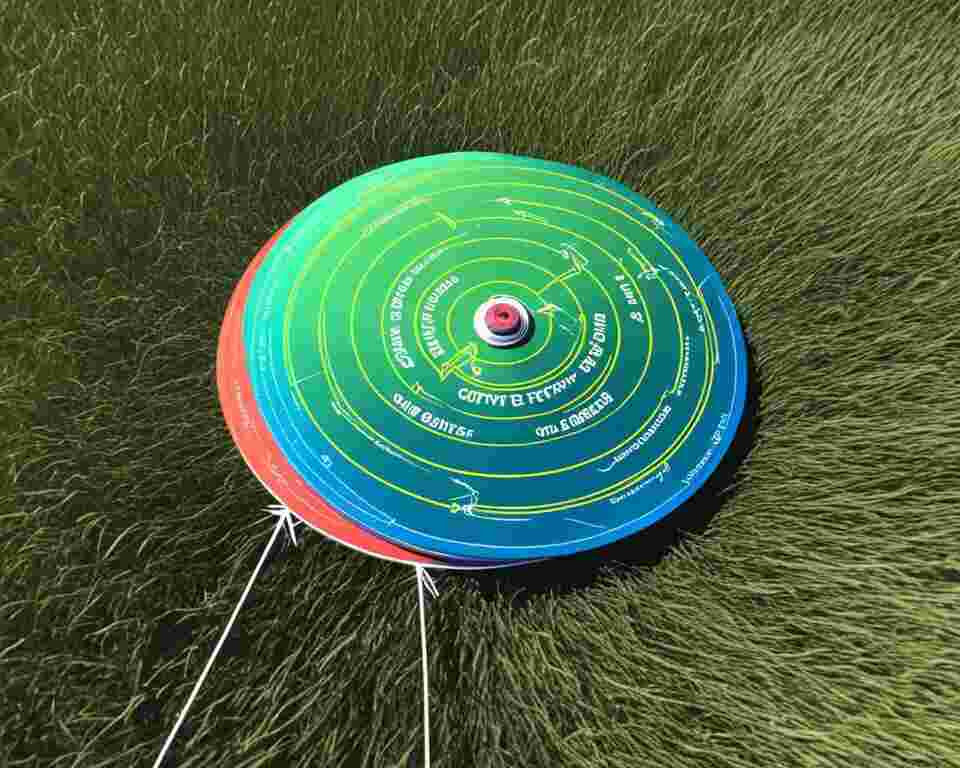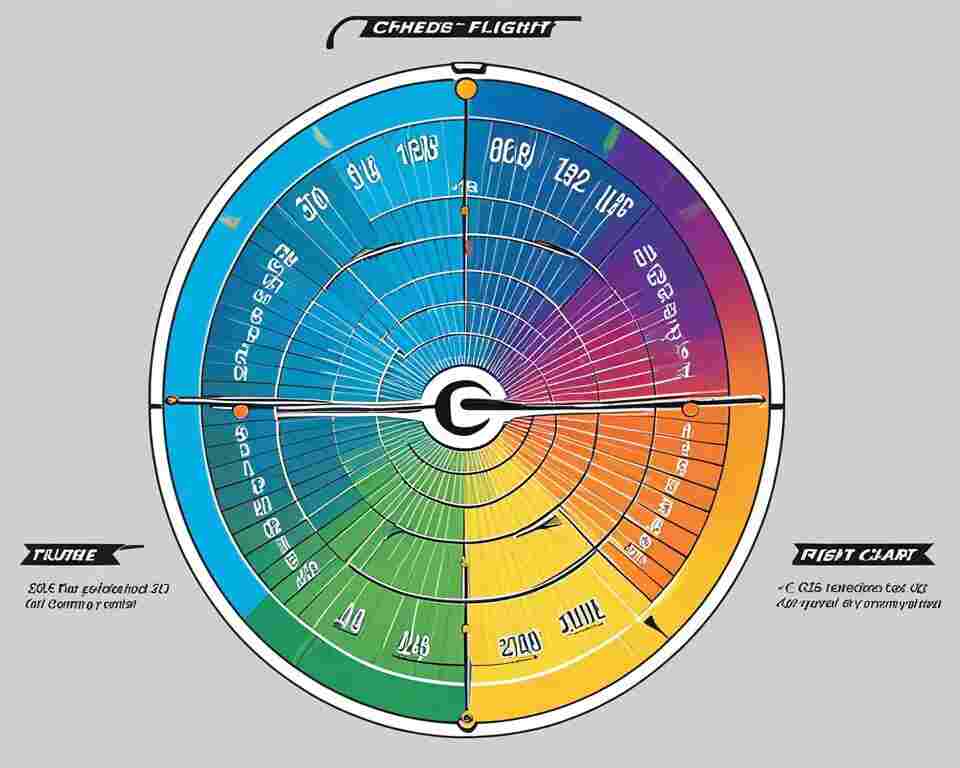Have you ever wondered how disc golf discs are able to soar through the air with such precision and distance? What factors contribute to their flight behavior, and how can understanding these dynamics enhance your game?
Disc golf is a thrilling sport that combines elements of golf and Frisbee. Instead of using clubs and balls, players throw specialized discs into baskets, navigating through challenging courses. To become a skilled disc golfer, it’s essential to comprehend the mechanics behind disc flight.
In this article, we will explore the fascinating world of disc golf disc flight. We will delve into the components that influence their trajectory, the physics behind disc flight, and the flight rating system that helps players select the right discs for their game. By the end, you’ll have a deeper understanding of how disc golf discs fly and how you can use this knowledge to improve your skills on the course.
So, let’s embark on this journey through the air and unravel the secrets of disc golf disc flight!
Key Takeaways:
- Understanding the components of disc flight is crucial for improving your disc golf game.
- Spin, speed, and stability are key factors that determine the trajectory and distance of disc golf discs.
- Fundamental forces like lift, drag, and gravity play a significant role in disc flight.
- The shape of a disc can impact its stability and aerodynamics.
- The flight rating system provides valuable information about a disc’s characteristics.
How Disc Golf Discs Fly: Analyzing the Components of Disc Flight
When it comes to the flight of a disc golf disc, several key components play a crucial role. These components include spin, speed, and stability, which together determine the disc’s trajectory and overall flight pattern. By understanding these factors and how they interact with each other, disc golfers can gain greater control over their throws and improve their gameplay.
Spin, Speed, and Stability: Key Factors in Disc Flight
Spin is one of the most important factors in disc flight. It provides stability and helps the disc maintain its intended path through the air. When a disc is released with too little spin, it may wobble and veer off course. On the other hand, excessive spin can also lead to stability issues, causing the disc to turn or fade more than desired.
The speed at which a disc is thrown also influences its flight. Faster throws tend to result in longer distances, while slower throws provide more control, allowing for accurate placement. It’s important for disc golfers to find the right balance of spin and speed to achieve their desired flight patterns.
Stability is another critical factor that affects disc flight. A disc’s stability is determined by its resistance to turning. Stable discs typically fly straight with minimal deviation from their release angle, making them ideal for precision shots. Understandably, stability requirements can vary depending on a player’s throwing technique, which is why it’s crucial to choose discs that match their skill level and style.
One helpful tool for understanding disc stability is Innova’s rating system. This system assigns a stability value to each disc, allowing players to quickly assess its flight characteristics. The stability rating typically ranges from -3 (most understable) to +3 (most overstable). By familiarizing themselves with this rating system, disc golfers can make informed choices when selecting discs for their throwing techniques.
Continue reading to discover the physics behind disc golf disc flight and how it influences gameplay.
| Component | Description |
|---|---|
| Spin | Defines the stability and distance potential of the disc. |
| Speed | Determines the disc’s trajectory and distance potential. |
| Stability | Affects the disc’s resistance to turning and its flight path. |
The Physics Behind Disc Golf Disc Flight
Understanding the physics behind the flight of disc golf discs is essential for players looking to improve their game. Several fundamental forces come into play, influencing the trajectory, speed, and stability of the disc. Additionally, the aerodynamics of disc golf discs can be compared to golf balls to provide insights into flight behavior. Finally, the shape of a disc plays a significant role in determining its flight characteristics, with factors such as rim width, disc profile, and weight distribution affecting stability and aerodynamics.
Fundamental Forces Affecting Disc Golf Discs
The flight of disc golf discs is governed by three primary forces: lift, drag, and gravity. Lift, generated by the disc’s rotation and the airflow underneath it, allows the disc to stay aloft and counteracts the force of gravity. Drag, created by the air resistance that opposes the disc’s forward motion, limits the distance and speed of the disc. Gravity, a constant force acting downward, affects the descent and stability of the disc in flight.
Comparing Golf Balls and Disc Golf Disc Aerodynamics
While golf balls and disc golf discs share similarities in terms of flight, the aerodynamics of their designs differ significantly. Golf balls rely primarily on backspin for lift, with dimples on the surface creating a turbulent airflow that reduces drag. In contrast, disc golf discs utilize both backspin and the shape of their rim to generate lift. The unique rim shape and profile of a disc contribute to its flight characteristics, such as stability and glide.

Impact of Disc Shape on Flight Behavior
Disc shape plays a crucial role in determining the flight behavior of a disc golf disc. Characteristics such as rim width, disc profile, and weight distribution influence the disc’s stability, speed, and glide. A wider rim generally indicates a faster disc, while a flatter and more aerodynamic profile promotes greater glide and distance potential. The weight distribution throughout the disc affects its stability, with discs having more weight towards their outer edge typically being more stable.
Deciphering the Disc Golf Flight Rating System
The disc golf flight rating system provides valuable information about a disc’s flight characteristics. By understanding these ratings, players can make informed decisions when selecting discs for their game.
Breaking Down Speed, Glide, Turn, and Fade
The speed rating indicates the disc’s potential for distance. Discs with higher speed ratings are designed for experienced players who can generate more power and arm speed. On the other hand, discs with lower speed ratings are better suited for beginners or players with slower arm speeds.
The glide rating measures the disc’s ability to maintain lift and stay in the air. Higher glide ratings indicate that the disc will carry farther and have more hang time, while lower glide ratings suggest a disc that will descend more quickly.
The turn rating represents the disc’s tendency to curve either left or right during flight. A positive turn rating means the disc is more likely to veer right (for right-handed backhand throws), while a negative turn rating indicates a disc that is more likely to fade left. Discs with zero turn ratings will fly straight with minimal deviation.
The fade rating relates to the disc’s fade at the end of its flight. Positive fade ratings mean the disc will finish left (for right-handed backhand throws), while negative fade ratings suggest a disc that will finish right. Discs with minimal fade will have a straighter finish.
How Different Plastics Affect Disc Flight Characteristics
For example, Champion and Glow Champion plastics tend to produce discs with less high-speed turn compared to premium plastics like Star and GStar. This means that discs made from Champion and Glow Champion plastics will be more stable during fast throws and exhibit less initial curve.
Understanding the effects of different plastics on disc flight can help players make more informed decisions when selecting discs for specific shots or course conditions.
Understanding Stability Through Innova’s Rating System
Innova rates the stability of their discs on a scale from -3 to +3. Discs with a stable rating of +1 or +2 will offer more dependable flights, minimizing unwanted turn or fade. Conversely, discs with a negative rating of -1 or -2 will exhibit more understable flight characteristics, veering right (for right-handed backhand throws).
By considering the stability ratings provided by Innova, players can select discs that match their throwing technique and desired flight paths.

| Rating | Characteristics |
|---|---|
| Speed | Disc’s potential for distance |
| Glide | Disc’s ability to maintain lift |
| Turn | Disc’s tendency to curve left or right |
| Fade | Disc’s fade at the end of flight |
Conclusion
Applying knowledge of disc flight can have a significant impact on your disc golf game. By understanding the flight characteristics of disc golf discs, you can make informed decisions when selecting discs that match your throwing style and desired flight patterns. Disc selection is crucial in maximizing your potential on the course.
In addition to disc selection, technique plays a vital role in optimizing your disc golf disc’s potential. Focusing on proper grip, controlled release angles, and a smooth follow-through can greatly enhance your accuracy and distance. By honing your technique and combining it with an understanding of disc flight, you can achieve greater control over your shots.
It’s important to analyze your throw and conduct a thorough throw analysis to identify areas for improvement. Pay attention to factors such as disc speed and glide, as well as disc weight and flight ratings. This analysis will give you valuable insights into your strengths and weaknesses, enabling you to fine-tune your game and unlock your maximum potential.
By harnessing the power of knowledge and technique, you can take your disc golf game to new heights. Remember to experiment with different disc flight techniques and continually push yourself to improve. With practice, dedication, and a deep understanding of disc flight, you’ll see remarkable progress in your disc golf skills and enjoy the true essence of the game.

